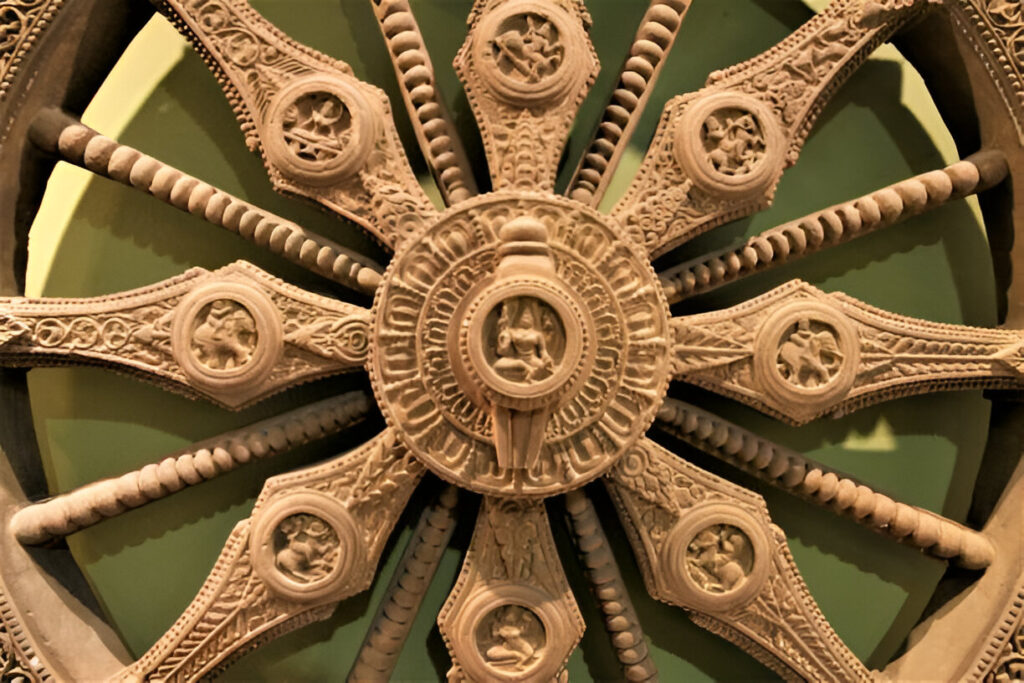
Art & Architectural Heritage Of India
Indian art and architecture reflect the deep cultural and historical roots of the Indian subcontinent, which now includes India, Pakistan, and Bangladesh. These art forms showcase the creativity, spirituality, and craftsmanship that define ancient Indian heritage.
In the Western world, beautiful collections of Indian art can be seen at the British Museum, the Victoria and Albert Museum in London, and the Museum of Fine Arts, Boston. These museums display a wide range of artworks that highlight India’s artistic excellence.
Although a large amount of secular Indian art was created, most of it was made from perishable materials and has not survived over time. Still, India’s temples, sculptures, and architectural monuments continue to represent the timeless beauty and cultural richness of Indian art and architecture.
What has survived through time in stone is mainly religious Indian art. Both Buddhist and Hindu art use deep symbolism in gestures, postures, and attributes, each carrying multiple layers of meaning.
In Buddhist sculpture, the Buddha’s hand gestures (mudras) express spiritual states such as Enlightenment (Nirvana), Meditation, and Preaching. These symbols reflect the teachings and inner peace of Buddhism.
In Hindu sculpture, divine figures like Vishnu, Krishna, and Shiva are often shown with multiple hands, representing their power to perform many actions at once. Each hand usually holds an object or symbol that identifies the deity’s divine qualities.
Apart from Mughal art and architecture, which is studied separately, the main traditions of Indian art—Hindu, Buddhist, and Jain—form the foundation of India’s artistic and spiritual expression.
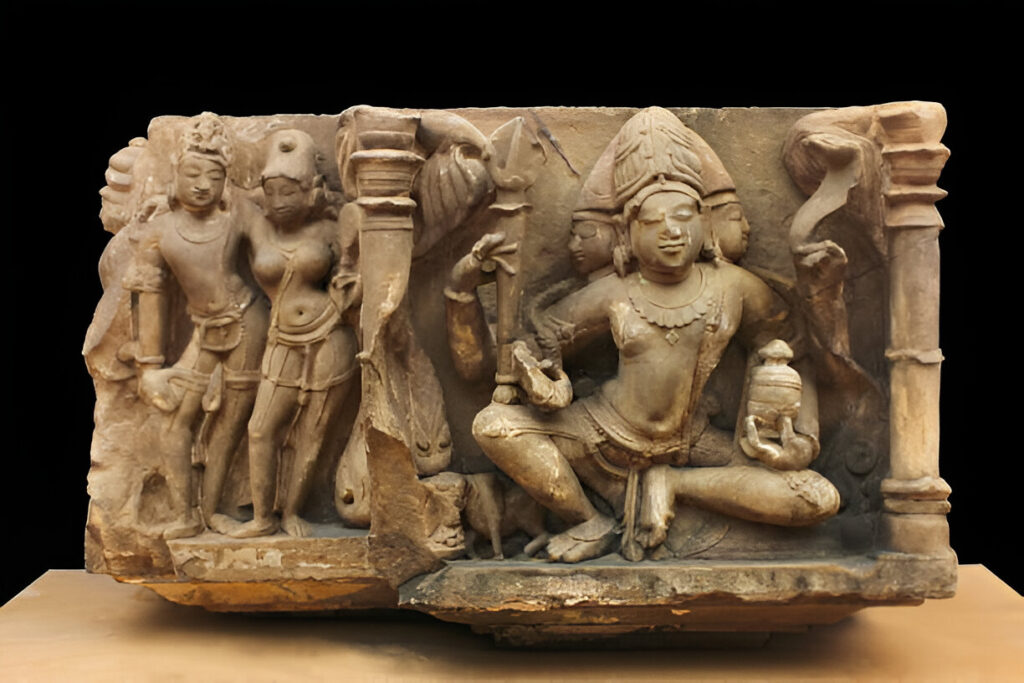
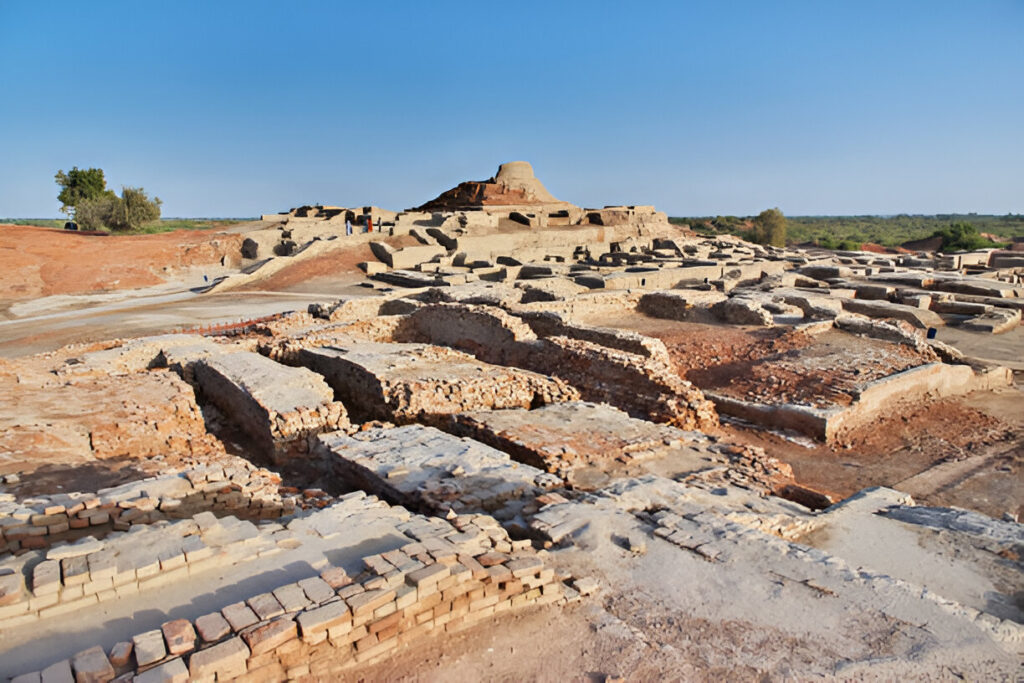
Indus Valley Civilization
The earliest Indian art originated in the Indus Valley Civilization during the second half of the 3rd millennium BC. The best-known archaeological sites are Harappa and Mohenjo-Daro, among the world’s earliest examples of planned urban design.
These ancient cities featured houses, markets, storage areas, offices, and public baths arranged in a grid-like pattern, showcasing advanced civic planning. They also had a highly developed drainage system, proving the civilization’s remarkable engineering skills.
The Indus civilization produced numerous statuettes made of steatite and limestone. Some figures show a formal Mesopotamian style, while others reflect a smooth and graceful design, marking the beginning of classical Indian sculpture. These early artworks capture the prana, or breath of life, that became central to later Indian art and sculpture.
In the Indus Valley region, archaeologists have discovered square steatite seals beautifully carved with various animal motifs, including realistically depicted bulls. Other remarkable artifacts include ceramic storage jars with simple and stylized geometric designs, toys with wheels, and terracotta figurines, which are believed to represent mother goddesses symbolizing fertility and prosperity.
The discovery of bronze weapons, tools, and sculptures reflects the advanced craftsmanship of the Indus people. These artifacts highlight their technical skill and precision, showing progress in metalwork more than in aesthetic innovation.
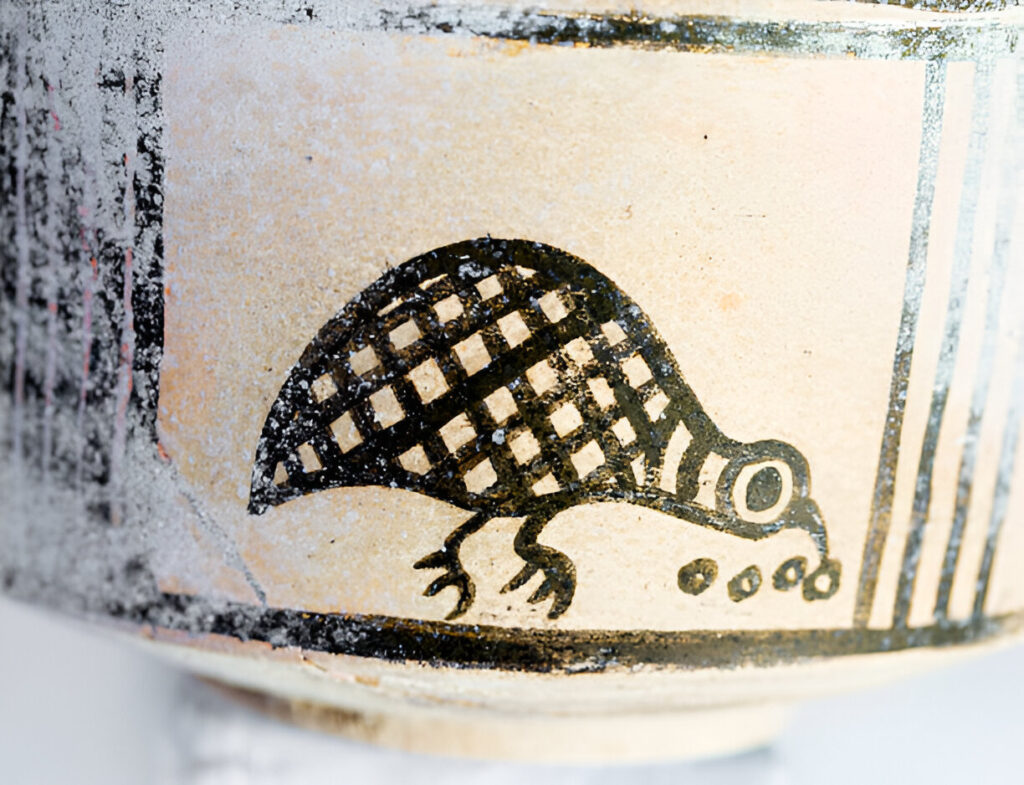

Post-Indus Civilization through the Maurya Dynasty
From the end of the Indus Valley Civilization (around 1500 BC) to Alexander the Great’s arrival in 325 BC, very few traces of Indian art and architecture remain. Yet, this period was vital in developing the basic principles of Indian architecture, originally seen in wooden structures that have since perished.
These early wooden buildings laid the foundation for later stone architecture. Their design and proportions strongly influenced Mauryan monuments, marking an important stage in the evolution of ancient Indian architectural styles.
The Maurya dynasty is known for its remarkable art and architecture, especially the edict pillars built by Emperor Ashoka across northern India to show his devotion to Buddhism. These monolithic stone pillars, over 50 feet (15 meters) tall, have smooth surfaces, lotus capitals, and animal figures carved with great skill.
Some pillar capitals show Persian (Persepolitan) influence, reflecting early cultural exchange. From Ashoka’s reignalso comes the earliest stone chaitya window, found near Bodh Gaya, marking an important step in Buddhist architecture.
The chaitya halls, or rock-cut monastic sanctuaries, evolved between the 3rd century BC and the 1st millennium AD. Over time, they became grand halls with columns, and their walls were decorated with paintings and sculptures, showcasing the spiritual and artistic growth of ancient India.
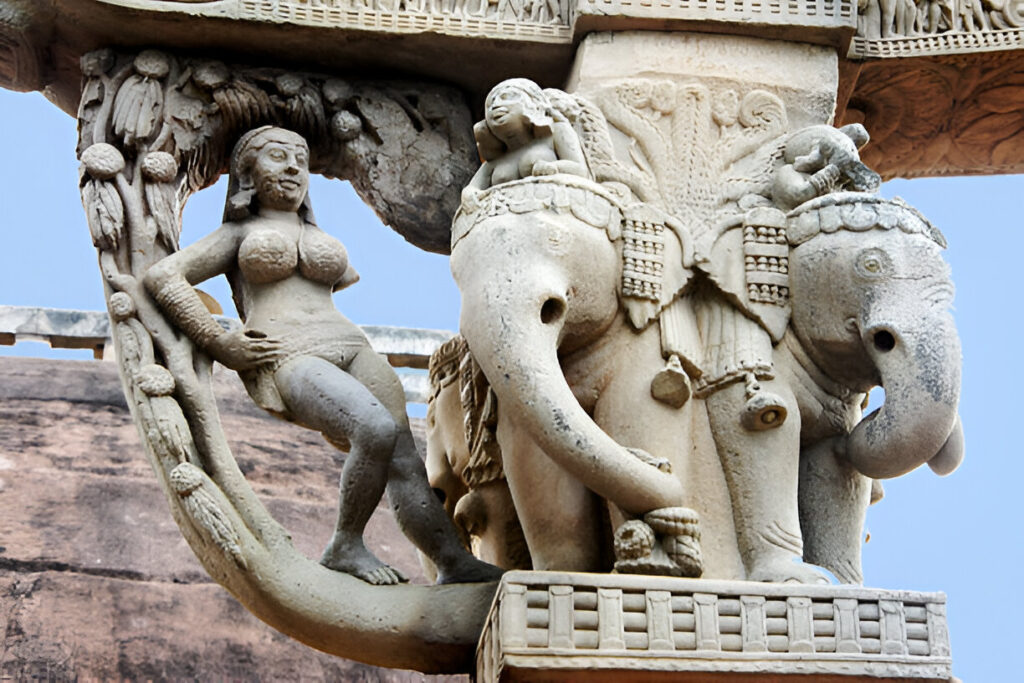
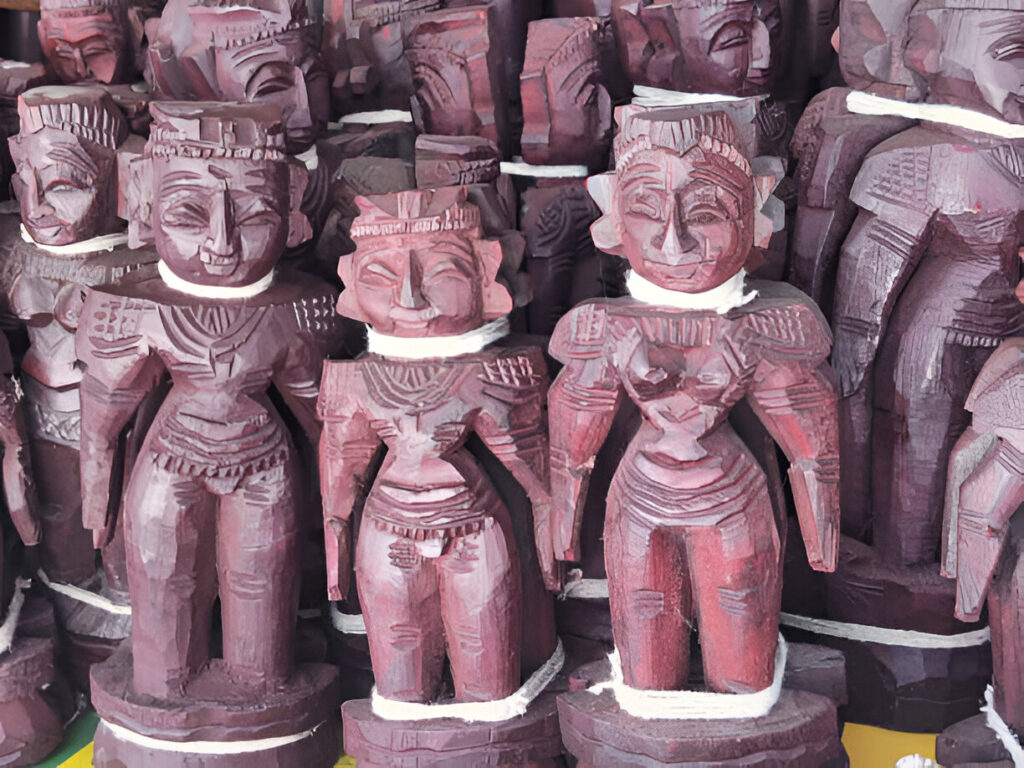
Sunga and Andhra Dynasties
The earliest surviving stupas were built during the Sunga dynasty (2nd–1st century BC) and the early Andhra dynasty (1st century BC). These Buddhist relic mounds were enclosed by stone railings and gateways richly decorated with carved ornaments.
One of the most famous examples is the Bharhut Stupa, known for its archaic-style sculptures. The relief medallionsdepict scenes from the life of the Buddha and the Jataka tales—stories of his previous births—arranged within a single detailed composition.
Figures of semidivine beings, such as yakshis (female nature spirits), are carved flat against the pillars they adorn, yet they still express the sense of prana, or life energy, that defines early Indian sculpture.
The Great Stupa at Sanchi reflects a style similar to earlier stupas, with gateway carvings from the early Andhra period showcasing advanced artistic skill. The yakshis here appear with full, graceful forms, and the high-relief carvings tell stories in a continuous narrative style.
The carved railing at Bodh Gaya, where the Buddha attained enlightenment, and the earliest wall paintings—such as those in the Ajanta caves—also belong to the early Andhra period. The Ajanta paintings beautifully depict scenes like the Buddha’s birth as an elephant and other key moments of his life.
In southern India, the later Andhra dynasty thrived into the 1st century AD, creating masterpieces such as the Great Stupa at Amaravati (c. AD 200). The bas-reliefs at Amaravati are known for their complex yet balanced composition, light and shadow effects (chiaroscuro), and the lively detailing of their crowded scenes, symbolizing the peak of early Buddhist art in India.

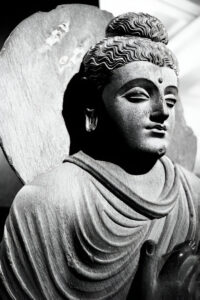
Gandhara and Mathura
During the Kushan period (2nd–5th century AD), conquerors from Central Asia fostered two major artistic styles in India — the Gandhara art and the Mathura art. The Gandhara style, named after the region now in Pakistan, produced some of the earliest sculpted images of the Buddha.
In earlier sites like Bharhut and Sanchi, the Buddha was depicted symbolically through the pipal tree, wheel of life, footprints, or an empty throne. The Gandhara art style, deeply influenced by Hellenistic (Greek) art of the 2nd century, later influenced Central and East Asian Buddhist art as well.
Finds of ivories, imported glass, and lacquerware reveal the cosmopolitan culture and trade of this era. The stupas and monasteries of the period were decorated with relief friezes carved in dark schist, featuring classical poses and flowing Hellenistic drapery, symbolizing the fusion of Indian spirituality and Greco-Roman realism.
In Mathura, located in the east and south under Kushan rule, a truly Indian style of sculpture developed. Artists mainly used reddish limestone, giving their works a warm and natural appearance.
The Mathura Buddhas appear sensuous and full-bodied, crafted according to canonical proportions, and often smile gently at their worshipers, expressing a sense of peace and divinity. The yakshi reliefs on railing pillars are more sensual and expressive than those at Sanchi, highlighting Mathura’s vibrant and bold artistic spirit.
While Gandhara art introduced Hellenistic elements to Buddhist imagery, Mathura art preserved and refined native Indian traditions for almost three centuries, laying the foundation of classical Indian sculpture.


The Gupta Period
The Gupta period, known as the Golden Age of India, marked the peak of Buddhist art and architecture. The most iconic example is the Ajanta rock-cut monastery, featuring several chaitya halls and residential viharas carved into cliffs with great precision.
The facades and interiors of these caves display elegant relief sculptures, while the walls and ceilings are adorned with colorful murals showing graceful and fluid figures painted with extraordinary skill and beauty.
During this era, Buddhist, Hindu, and Jain art shared common styles and themes. The Gupta artists created large stone statues, terracotta reliefs, and bronze sculptures with a refined and harmonious aesthetic, reflecting the high artistic excellence of ancient India’s most creative age.
After the 7th century, under the Pala and Sena dynasties (730–1197 AD), rulers who were mainly Hindu continued to support the creation of important Buddhist art.
Exquisite bronze and black stone sculptures from Nalanda and nearby regions show the refined evolution of the Gupta artistic style, featuring intricate ornamentation and detailed craftsmanship. These works highlight the continuity and richness of Buddhist art in eastern India during this period.
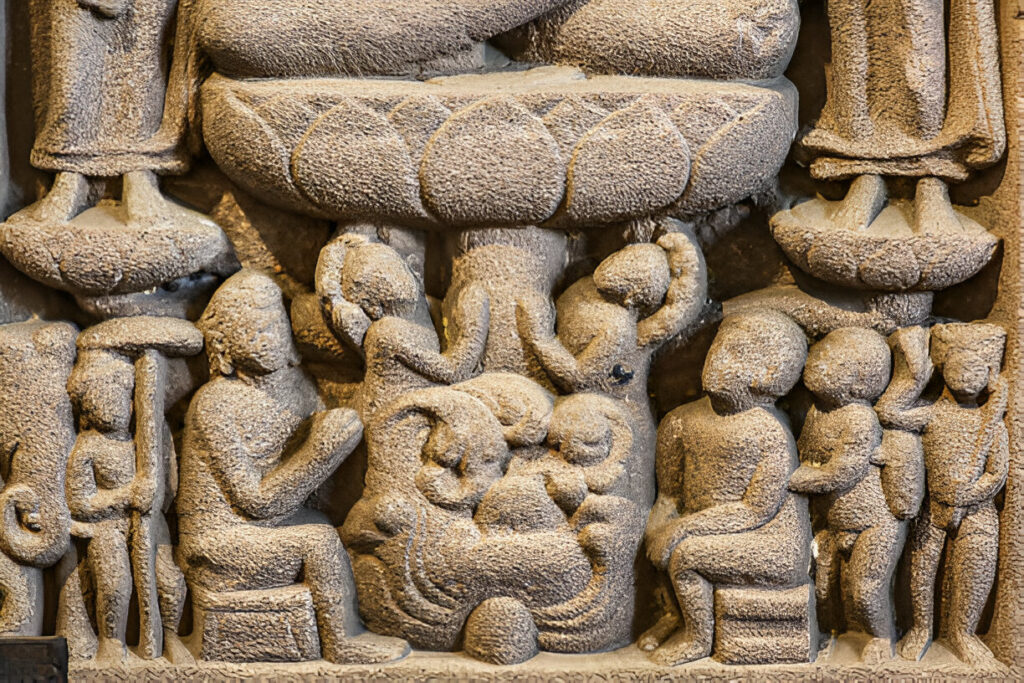
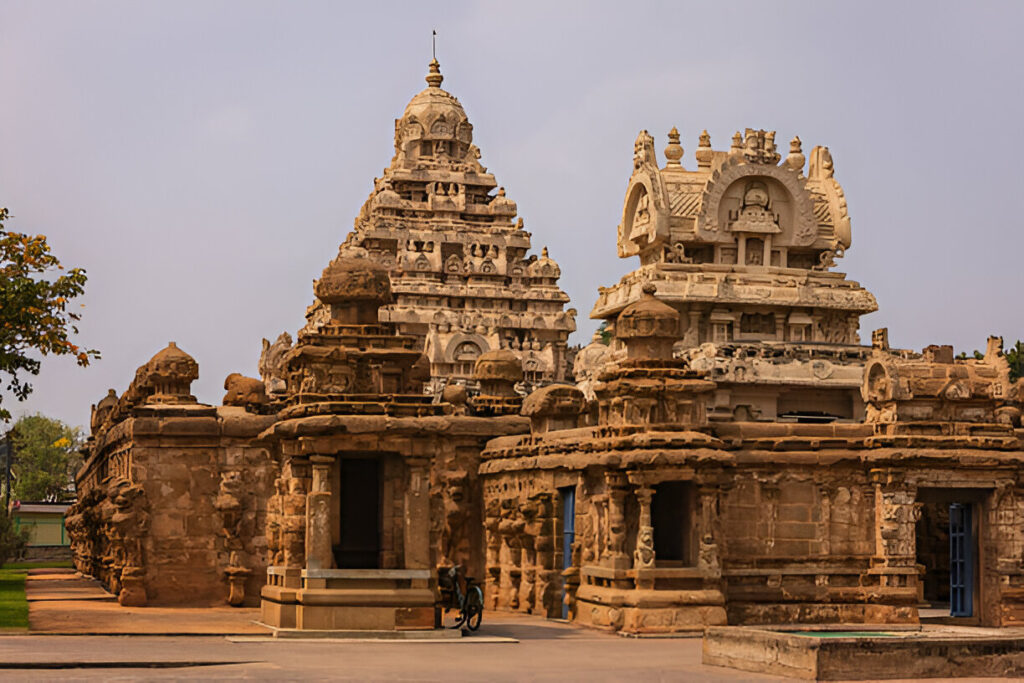
Architecture and Sculpture of the Hindu Dynasties
From the 6th century onward, with the revival of Hindu dynasties, a distinct Hindu temple architectural styleemerged across India. The typical temple plan included an entrance portico, leading to a pillared hall (mandapa), and finally into the inner sanctum (cella).
The main shrine was often topped by a tower called the shikhara. In South India, the Dravida-style tower rose in tiered terraces, each representing a different deity, while in North India, the Nagara-style spire ascended in a graceful conical form.
These ancient temples, adorned with intricate stone carvings and sculptures, display the artistic brilliance and spiritual symbolism of Indian architecture. Today, they remain iconic landmarks for cultural tourism and historical research.
Countless temples were built during this period, so richly adorned with carvings that the style became known as “sculptural architecture.”
The Khajuraho temples in central India (c. 1000 CE) mark the peak of Nagara architecture, celebrated for their exquisite carvings and symbolic artistry. The Sun Temple at Konark (c. 1250 CE), though partially damaged, showcases intricate and erotic sculptures that balance graceful detailing with monumental scale.
Similarly, the Jain temples of Mount Abu, crafted entirely from imported white marble between the 10th and 13th centuries, feature simple exteriors but lavishly carved interiors, displaying India’s mastery of stone craftsmanship.

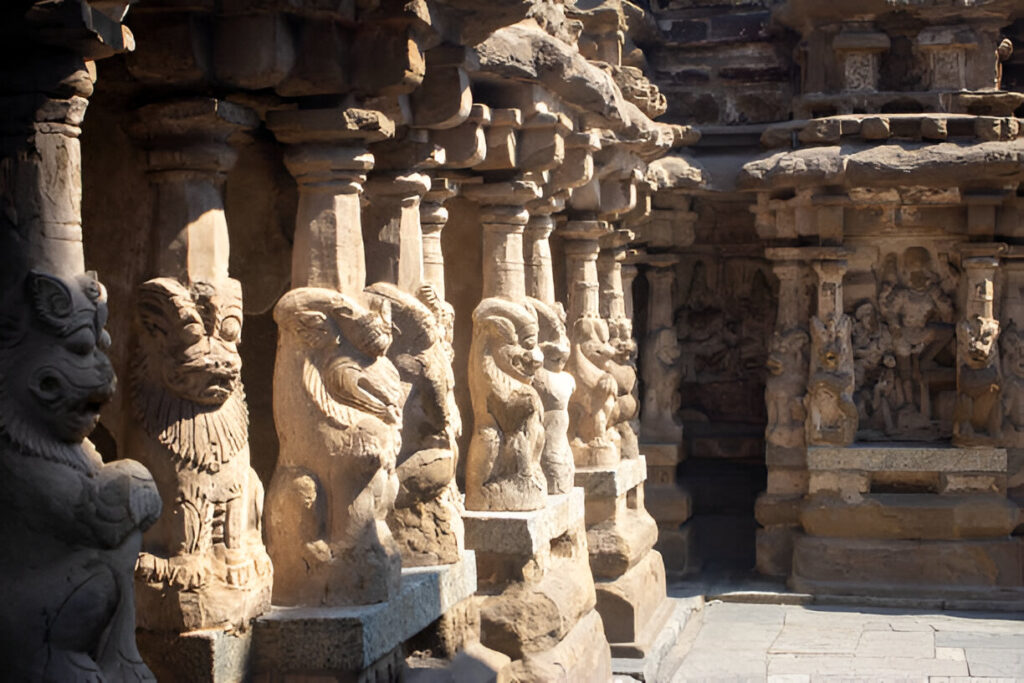
In the 7th century, the Pallava dynasty pioneered the Dravida style of temple architecture, evident in the pyramidal rathas (rock-cut temples) at Mahabalipuram. A monumental cliff carving at the site depicts life-sized figures of gods, humans, and animals, including a renowned elephant family scene, showcasing the artistic mastery of the era.
This architectural style continued into the 8th century, seen in the rock-cut temple at Ellora, which followed the Dravida layout with greater structural complexity.
The Chola dynasty in 11th-century South India further refined this form, creating grand temples and producing exquisite bronze sculptures, most notably the Nataraja (dancing Shiva) figures — icons of balance, rhythm, and divine energy in Indian art.
The Dravida architectural style reached its peak with grand temple townships, the most notable being Srirangam, which features seven concentric enclosures symbolizing cosmic harmony. However, by the 17th century, this evolved into the more ornamental stucco architecture seen in Madurai, marking a shift from stone precision to decorative richness.
During the medieval period, bronze sculpture flourished across South India, primarily depicting Hindu deities used in temple processions and household worship.
Artists mastered the cire perdue (lost-wax) technique, creating intricate bronze figures with lifelike detail and fluidity. This traditional craft continued in various regions of India up to the late 19th century, preserving one of the country’s finest artistic legacies.


